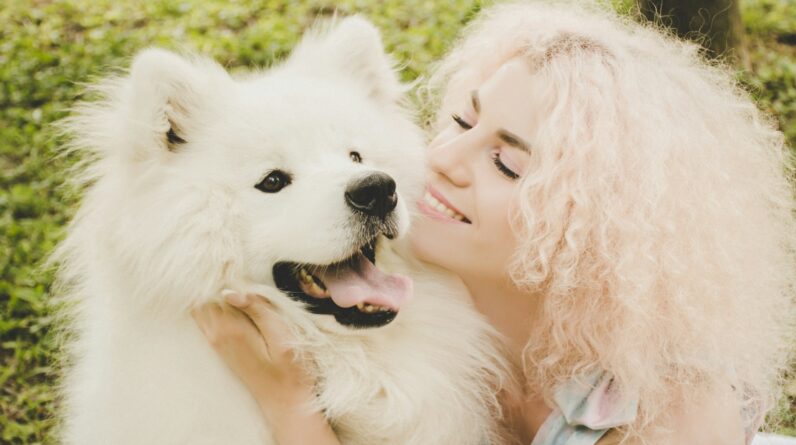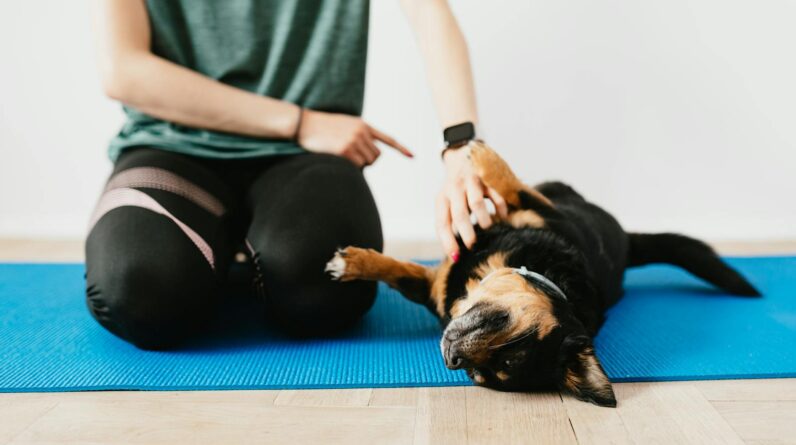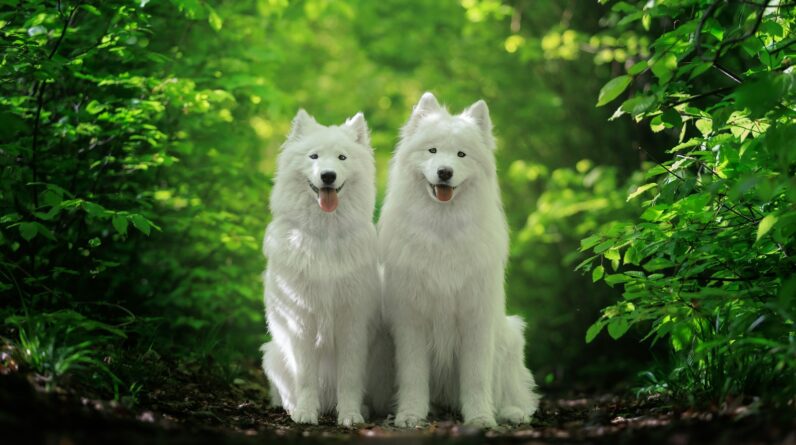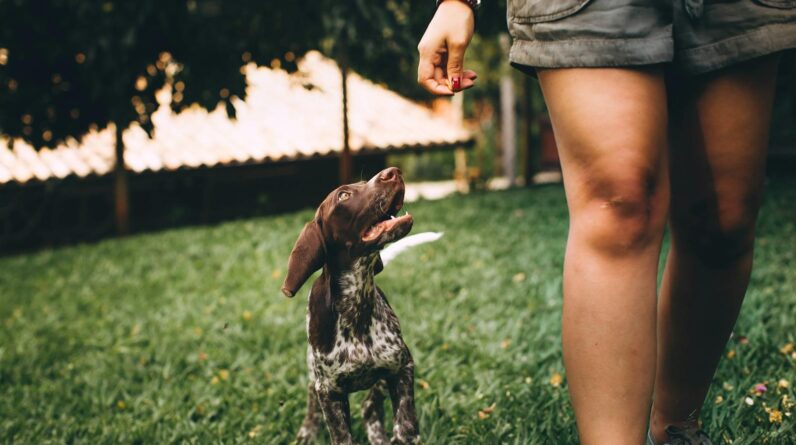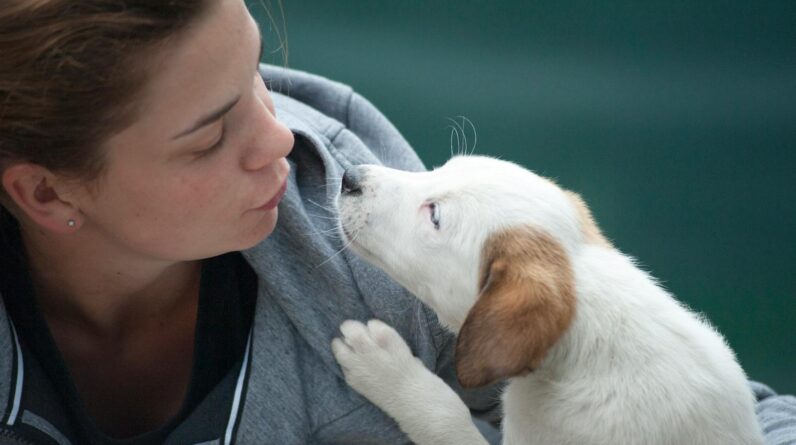
Hey, Let’s Talk About Grumpy Dogs!
Have you ever seen a dog get really mad, like it’s ready to start a fight? That’s called aggression. It’s important to understand why dogs get aggressive and what we can do to help them chill out. So, let’s dive in!
Why Do Dogs Get Mad?
Imagine this: You’ve got the last piece of your favorite pizza, and someone tries to grab it. Annoying, right? Dogs feel the same when it comes to their toys, food, or even their human friends. They might bark, growl, or show their teeth to say, “Back off, that’s mine!”
Some dogs haven’t hung out with enough other dogs or people when they were puppies. They might act like the new kid at school who isn’t sure how to make friends and gets a bit pushy. Then, there are dogs who get scared or are in pain, and they might snap because they don’t know how to say, “I’m not feeling okay.”
What Are Warning Signs?
Getting to know a dog’s body language is super helpful. If a dog’s ears are back, its fur is standing up, or it’s showing its teeth, that’s like it shouting, “I’m getting mad!” Other times, a quiet dog or one that’s not wagging its tail could also be a sign that it’s not in a playful mood.
A dog that’s showing off this type of body talk might need a break from whatever is bugging it. It’s like when you need a time-out after playing a tough level on a video game for too long.
How Do You Keep Things Cool?
The best trick to helping an upset dog is to understand what sets it off. Like a detective, you look for clues. Does it get mad around other dogs, during mealtime, or when meeting new people?
When you know what causes the growlies, you can help your dog learn to deal with it better. This might mean slowly getting your dog used to other dogs in a safe way or teaching it to sit and stay calm when visitors come over.
Another cool idea is to use rewards. When your dog chills out instead of getting mad, give it a treat or some love. Dogs are smart – they remember that staying cool means good things happen!
Can You Train Away the Grumps?
With time and patience, you definitely can help your dog learn better ways to handle its grumpies. This is where stuff like training classes come in handy. They’re like school for dogs – they get to learn how to be their best around everyone.
Some dogs get the hang of this pretty fast, while others may take a bit longer. The key is to keep practicing and not give up. It’s sort of like learning how to ride a bike. You might fall off a few times, but you keep getting back on until you can ride without wobbling.
Sometimes Dogs Need a Doctor’s Help
But wait, it’s not just about learning and training. Some dogs might act aggressively because they’re not feeling well. Maybe they have an ache or something else that’s bothering them on the inside. When this happens, a vet, which is an animal doctor, can take a look and figure out what’s wrong. They might give the dog medicine, which could make it feel a whole lot better.
There are also some special animal experts called behaviorists. They’re like detectives and teachers combined but for animals! They help figure out why a dog is being aggressive and teach them how to be happy and relaxed.
What Can You Do at Home?
So, what’s the homework for us when it comes to helping our canine buddies? First, give them lots of love and exercise. A tired dog is usually a happy dog. Play fetch or take them on walks. Just make sure they are getting the wiggles out in a good way.
Be patient and kind. Never yell or be rough with a dog – that’s just going to make things worse. Instead, imagine you’re teaching your younger sibling how to tie their shoes. You’re going to be gentle and take it slow, right?
Finding your dog’s favorite things – like belly rubs, treats, or a squeaky toy – can make training way more fun. Use these to show your dog that listening to you is awesome.
If you’re a kid, make sure you talk to your grown-ups before trying to train or help an aggressive dog. It’s super important to stay safe and work on this as a team. Plus, it’s always more fun with a buddy!
In the end, remember every dog is different. Some might just need a little more help learning how not to be a grumpy pants. With love, patience, and the right care, we can help our furry friends feel better and be well-behaved pals.
What are the main causes of aggression in dogs?
Aggression in dogs can often be traced back to fear, territorial instincts, or a protective nature. A dog might feel threatened by strangers, other animals, or unfamiliar situations and react defensively. Poor socialization or past negative experiences can also contribute to aggressive behaviors.
Another factor could be resource guarding, where a dog becomes aggressive to protect food, toys, or other valuables. It’s important to identify the cause to address the behavior effectively. Consulting a professional is usually the best course of action.
How can I tell if my dog is showing signs of aggression?
A dog exhibiting aggression may growl, snarl, or show its teeth. Pay attention to body language; a stiff posture, raised fur, and a fixed gaze can be warnings. Some dogs may also bark or lunge forward aggressively. Identifying these signs early is key to preventing escalation.
Averting an aggressive incident could be as simple as removing your dog from the trigger situation. If your dog is acting aggressively without an immediate cause, it might be signalling discomfort or illness, so a vet visit is advisable.
Can training help reduce my dog’s aggressive behavior?
Yes, training can significantly help manage and reduce aggression. Consistent, positive reinforcement techniques teach dogs appropriate behavior. Obedience training also strengthens the bond between you and your dog, increasing their trust and your ability to control them in various situations.
However, you should approach training with caution. Some dogs might need special behavior modification programs tailored to their specific issues. Working with a professional dog trainer or behaviorist can offer a customized plan to help manage your dog’s aggression safely.
Is dog aggression always a sign of a bad temperament?
Not necessarily. While temperament can play a role, aggression is often a reaction to particular stimuli or circumstances rather than an inherent personality flaw. A generally calm and friendly dog can display aggression if feeling pain, threatened, or provoked.
It’s crucial to look at the whole picture, understanding the context of the aggression before labeling a dog. With proper care, training, and sometimes medical intervention, even dogs with aggression issues can often be guided to more positive behaviors.
What should I do if my dog is aggressive towards other dogs while on walks?
If your dog shows aggression towards other dogs during walks, it’s vital to maintain control. Keep a secure grip on the leash, and try to distance your dog from the other animals. Stay calm, as your dog can pick up on your emotions. Use commands they know well to focus their attention on you.
Consider seeking help from a professional to work on your dog’s socialization skills. They can provide controlled environments and structured interactions with other dogs to help your pet learn proper behaviors. In the meantime, choosing quieter routes or walking at less busy times can help manage the situation.
Key Takeaways
- Dog aggression can stem from many causes such as fear, territorial behavior, or a lack of socialization. It’s essential to pinpoint the root of the aggression to address it properly.
- Understanding a dog’s body language helps preemptively manage aggressive tendencies. Signs like growling, baring teeth, or a stiff posture can indicate discomfort or potential aggression.
- Socialization from a young age is key. Introducing pups to various people, dogs, and situations can help reduce fear-based aggression later in life.
- Positive reinforcement training works wonders. Reward your pooch for good behavior rather than punishing negative outbursts; this encourages a happier, more confident dog.
- Consulting a professional, such as a vet or an animal behaviorist, is a smart move for dealing with aggression. They’ll help tailor a plan specific to your dog’s needs.
- Exercise is like a magic elixir for dogs. Regular physical activity helps burn off excess energy that could otherwise fuel aggressive behavior.
- Never ignore aggression in dogs. Even if it seems minor, without intervention, it can escalate and become more dangerous. Always nip it in the bud early.
- Lastly, managing aggression is not a quick fix—it requires consistency, patience, and sometimes lifestyle changes to ensure both you and your dog can live stress-free.
Final Thoughts
Managing dog aggression starts with figuring out the why. Is it fear, protection, or something else triggering your furry mate? Once you know, you can train better or get professional help. It’s all about patience, positive vibes, and understanding. Avoid rough reactions, or you’ll just add fuel to the fire.
Remember, aggression doesn’t mean your dog’s a bad apple. Often, it’s about how they were raised or past troubles. It’s crucial to ensure safety for everyone, furry or not, by using leashes or muzzles when necessary. And don’t forget, sometimes you gotta chat with a vet or a behaviorist to get to the root of the growls.
Keep in mind, success won’t happen overnight. But with consistent guidance and a boatload of love, even the growliest of dogs can learn to keep their cool. Hang in there and stay positive. Your pooch is counting on you!



